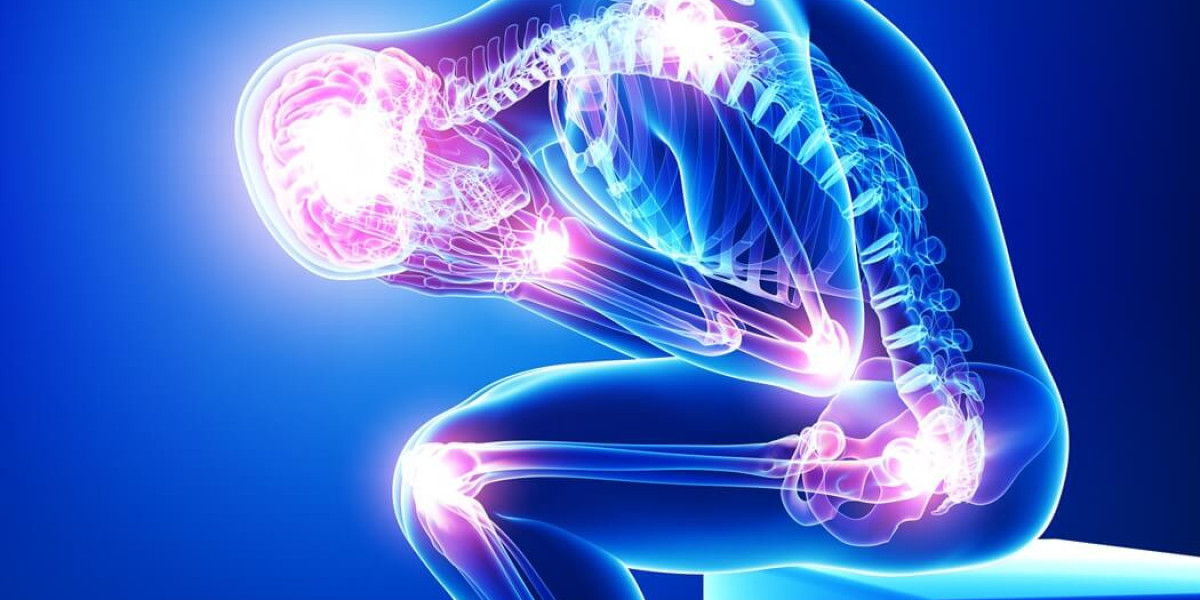Chronic pain is a complex and debilitating condition that not only affects the body but also has profound implications for the brain. In this article, we delve into the intricate relationship between chronic pain and the brain, exploring the concept of neuroplasticity and how the brain adapts to persistent pain signals. By understanding the neural mechanisms involved in chronic pain processing, the effects of pain on brain structure and function, and the role of neurotransmitters in modulating pain perception, we aim to provide insights into the intricate interplay between pain and the brain. Additionally, we will discuss the psychological and emotional consequences of chronic pain on brain health, strategies for managing pain while promoting brain resilience, and shed light on future directions in research to better address the challenges posed by chronic pain conditions.
1. Introduction to Chronic Pain and its Impact on the Brain
Defining Chronic Pain
Chronic pain is like that annoying friend who just won't leave the party – it sticks around for longer than you'd like and can seriously dampen your mood. Chronic pain is defined as persistent pain that lasts for longer than three to six months, even after the initial injury or condition has healed. It's basically the party crasher that overstays its welcome in your nervous system.
Overview of the Prevalence and Impact of Chronic Pain
Chronic pain is the unwelcome guest at the pain party that many people have to deal with. It affects approximately 20% of the world's population, making it a pretty common party pooper. Not only does chronic pain cause physical discomfort, but it can also take a toll on mental health, social relationships, and overall quality of life. It's like the grumpy neighbor who complains about the noise levels at 9 pm on a Saturday – it just brings everyone down.
Etadol 100 mg is a prescription medication designed to manage moderate to severe pain effectively. It functions as a μ-opioid receptor agonist and norepinephrine reuptake inhibitor, providing sustained pain relief for conditions such as neuropathic pain, musculoskeletal disorders, and post-surgical discomfort. Used under medical supervision, Etadol enhances daily functioning while minimizing opioid-related side effects, making it a reliable choice for pain management.
2. Neuroplasticity: The Brain’s Ability to Adapt to Chronic Pain
Understanding Neuroplasticity and its Significance in Pain Management
Neuroplasticity is like the brain's Marie Kondo – it's all about reorganizing and optimizing the space in your noggin. When it comes to chronic pain, neuroplasticity plays a crucial role in how the brain processes and adapts to persistent pain signals. It's like teaching an old dog new tricks, except in this case, the old dog is your brain and the new trick is finding ways to cope with chronic pain.
Neuroplastic Changes in the Brain in Response to Chronic Pain
Chronic pain can lead to some serious remodeling projects in the brain. Neuroplastic changes occur in response to persistent pain signals, causing alterations in brain structure and function. It's like rearranging the furniture in your living room to accommodate that one chair that always gives you back pain – your brain is constantly adjusting to deal with the ongoing discomfort of chronic pain.
3. Neural Mechanisms Involved in Chronic Pain Processing
Brain Regions and Networks Involved in Chronic Pain Perception
When it comes to chronic pain, certain brain regions and networks take center stage in the pain perception play. Areas like the somatosensory cortex, insula, and anterior cingulate cortex become the main characters in processing and interpreting pain signals. It's like a high school drama production, except instead of teenage angst, it's all about the sensation of pain.
Neurobiological Pathways Underlying Chronic Pain Sensitization
Chronic pain can be a sneaky little bugger when it comes to sensitizing the nervous system. Neurobiological pathways get all fired up, leading to increased sensitivity to pain signals and amplifying the pain experience. It's like turning up the volume on your favorite song – except in this case, the song is pain, and nobody wants it cranked up to 11.
4. Effects of Chronic Pain on Brain Structure and Function
Impact of Chronic Pain on Brain Morphology and Connectivity
Chronic pain doesn't just rain on your parade – it can also mess with your brain's structure and connectivity. Persistent pain can lead to changes in brain morphology and connectivity, altering how different brain regions communicate with each other. It's like a bad cell phone signal that disrupts your calls with important brain messages – chronic pain can seriously throw off the brain's communication network.
Cognitive Impairments Associated with Chronic Pain Conditions
Chronic pain isn't just a physical pain in the neck – it can also fog up your mental clarity. Cognitive impairments, such as difficulties with memory, attention, and decision-making, are common in individuals with chronic pain conditions. It's like trying to solve a Rubik's Cube while wearing a blindfold – chronic pain can make it challenging to think clearly and perform everyday tasks that require cognitive skills.
5. Role of Neurotransmitters in Modulating Pain Perception
Key Neurotransmitters Involved in Pain Processing
Neurotransmitters are like the messengers of the brain, passing on signals that affect how we perceive pain. Key players in the pain game include serotonin, dopamine, and endorphins, which can either dial up or dial down our pain perception.
Effects of Neurotransmitter Imbalance on Chronic Pain Development
When these neurotransmitters get out of whack, chronic pain can sneak in and make itself at home. Imbalances in these brain chemicals can amplify pain signals, leading to a vicious cycle of discomfort. Keeping the neurotransmitter squad in harmony is key to keeping chronic pain at bay.
6. Psychological and Emotional Consequences of Chronic Pain on the Brain
Link between Chronic Pain and Mental Health Disorders
Chronic pain isn't just a physical bother; it can throw a curveball at your mental health too. The brain and pain are in cahoots, and chronic pain can increase the risk of mental health disorders like anxiety and depression.
Psychosocial Factors Influencing Chronic Pain Experience
The company you keep matters, even when it comes to pain. Social support, stress levels, and coping strategies all cozy up to chronic pain, influencing how you experience and manage it. It's not just mind over matter; it's mind and matter in a complex dance.
7. Strategies for Managing Chronic Pain and Promoting Brain Health
Multidisciplinary Approaches to Chronic Pain Management
It takes a village to beat chronic pain. Combining treatments like physical therapy, medication, and psychological support can tackle pain from all angles, giving you a fighting chance at feeling better.
Lifestyle Interventions for Enhancing Brain Resilience in Chronic Pain Patients
Move over, pain – brain health is here to stay. Exercise, mindfulness, and healthy habits aren't just good for your body; they're brain-boosting tools that can help you weather the storm of chronic pain.
8. Future Directions in Research on Chronic Pain and Neuroplasticity
Emerging Technologies for Studying Brain Changes in Chronic Pain
Technology is the new Sherlock Holmes when it comes to unraveling the mysteries of chronic pain and the brain. Cutting-edge tools like brain imaging are giving researchers a front-row seat to how pain rewires the brain.
Potential Therapeutic Targets for Modulating Neuroplasticity in Chronic Pain Conditions
In the battle against chronic pain, new weapons are on the horizon. Researchers are eyeing ways to tweak neuroplasticity – the brain's ability to rewire itself – to dial down pain signals and offer relief. The future is looking brighter for chronic pain warriors. In conclusion, gaining a deeper understanding of how chronic pain affects the brain through the lens of neuroplasticity is crucial for developing more effective treatment strategies and improving the quality of life for individuals living with persistent pain conditions. By recognizing the impact of chronic pain on brain function and exploring avenues for intervention, we can work towards enhancing pain management approaches, promoting brain health, and ultimately, offering hope for those navigating the complexities of chronic pain.








